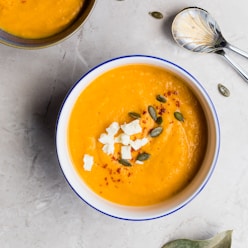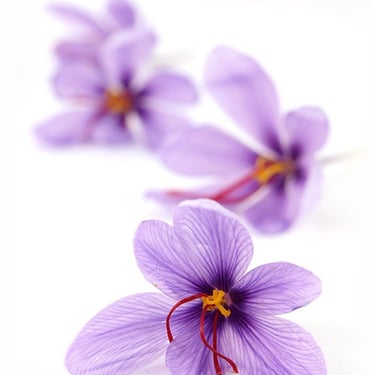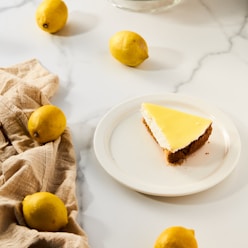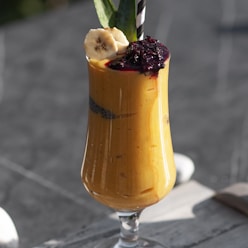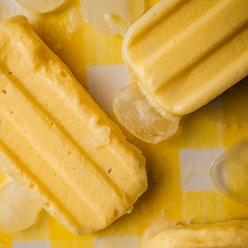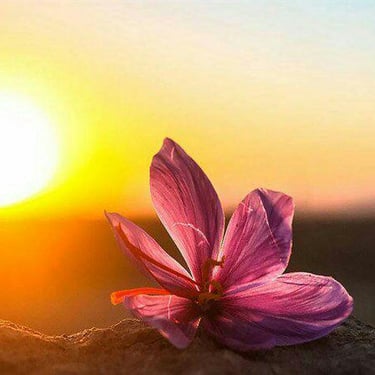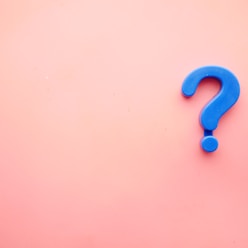Saffron FAQ's
What is saffron?
Saffron is a highly prized spice derived from the dried stigmas of the Crocus sativus flower. Due to its labour-intensive harvesting process, it is the world's most expensive spice.
Where does saffron come from?
Saffron is cultivated in Iran, Greece, Morocco, India, and Europe. The best saffron is grown in the Kashmir region of India.
How is saffron harvested?
Saffron is hand-harvested by skilled workers who carefully pick the delicate crimson stigmas from each crocus flower one by one. It takes around 150,000 flowers to produce just 1 pound of saffron.
What are the grades of saffron?
Saffron is graded based on its quality, with the highest grades being "Sargol" or "Coupé" (whole red stigmas), followed by "Mangholi" (stigmas plus some yellow style), and the lowest grade being "Pochette" (just the yellow style).
How can you identify pure saffron?
Pure saffron has an intense aroma, a vibrant red colour that releases yellow-orange colouring when added to liquids, and a slightly bitter, hay-like flavour. Fake saffron lacks these qualities.
What are the benefits of saffron?
Saffron is rich in antioxidants and has been used in traditional medicine for centuries. It may offer anti-inflammatory, mood-boosting, and memory-enhancing benefits.
How should saffron be stored?
To preserve its flavour, aroma, and potency, saffron should be stored in an airtight container in a cool, dark place away from heat and moisture.
What forms of saffron are available?
Saffron is available as whole threads, powdered, liquid extracts, and nano-encapsulated extracts for enhanced bioavailability.
How is saffron used in cooking?
Saffron adds colour, flavour, and aroma to dishes like rice, soups, stews, bread, and desserts. A pinch is usually enough due to its potency.
Are there any precautions with saffron?
Saffron is generally safe for most people when consumed in typical food amounts, but high doses can cause side effects like nausea, dizziness, and appetite changes.
Unlock the Secrets of Saffron: A Comprehensive FAQ Guide
As the world's most precious spice, saffron has captivated culinary enthusiasts and wellness seekers with its unique flavour, aroma, and potential health benefits.
At Saffron Co., we understand that navigating the realm of saffron can be a journey filled with questions. That's why we've curated a comprehensive FAQ collection to address every inquiry about this extraordinary spice.
In our "Saffron FAQs" section, you'll find a wealth of information covering a wide range of topics, from the origins and cultivation of saffron to its culinary applications and potential therapeutic properties.
Whether you're a seasoned saffron connoisseur or just beginning to explore this golden treasure, our FAQ collection will guide you.
Discover the answers to frequently asked questions about saffron quality, grading, and how to identify authentic saffron threads. Gain insights into the best practices for storing saffron to preserve its potency and flavour.
Explore the various forms of saffron available, from pure saffron threads to saffron powder, liquid extracts, and innovative nano-encapsulated products. Delve into the world of saffron recipes, learning to incorporate this versatile spice into sweet and savoury dishes, unlocking a realm of culinary possibilities.
Uncover the potential health benefits of saffron, including its antioxidant properties, mood-boosting effects, and possible therapeutic applications.
Our "Saffron FAQs" section is a comprehensive resource crafted by saffron experts, ensuring you receive accurate and reliable information. Whether you're a home chef, a health enthusiast, or simply curious about this exotic spice, our FAQ collection will empower you to appreciate and fully utilize the wonders of saffron.
At Saffron Co., we are committed to demystifying the world of saffron and making this precious ingredient accessible to all. Explore our "Saffron FAQs" today and embark on a journey of discovery, unlocking the secrets of this golden treasure one question at a time.
